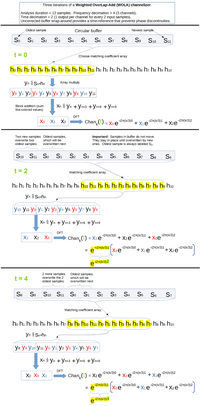Filter bank

A filter bank is like a big container with different sections to hold different kinds of things. But instead of things, the filter bank holds different sounds.
When we talk, sing, or play instruments, we make different sounds with different frequencies. These frequencies are like the "size" of the sound waves. So, just like how we have different sizes of shoes to fit different feet, we also need different sizes of filters to capture different sound frequencies.
The filter bank has many different sizes of filters inside it, and each filter catches a different frequency. When a sound goes into the filter bank, it gets split up and sorted out into different sections based on its frequency. And just like when you sort out different toys or clothes, it's easier to find what you're looking for when everything is nicely organized.
So, the filter bank is great because it makes it easier for us to analyze and understand different sounds. We can figure out which frequencies are the most important in a particular sound, and then we can use that information to create new sounds, improve the quality of sounds, or identify problems in sound recordings.
When we talk, sing, or play instruments, we make different sounds with different frequencies. These frequencies are like the "size" of the sound waves. So, just like how we have different sizes of shoes to fit different feet, we also need different sizes of filters to capture different sound frequencies.
The filter bank has many different sizes of filters inside it, and each filter catches a different frequency. When a sound goes into the filter bank, it gets split up and sorted out into different sections based on its frequency. And just like when you sort out different toys or clothes, it's easier to find what you're looking for when everything is nicely organized.
So, the filter bank is great because it makes it easier for us to analyze and understand different sounds. We can figure out which frequencies are the most important in a particular sound, and then we can use that information to create new sounds, improve the quality of sounds, or identify problems in sound recordings.
